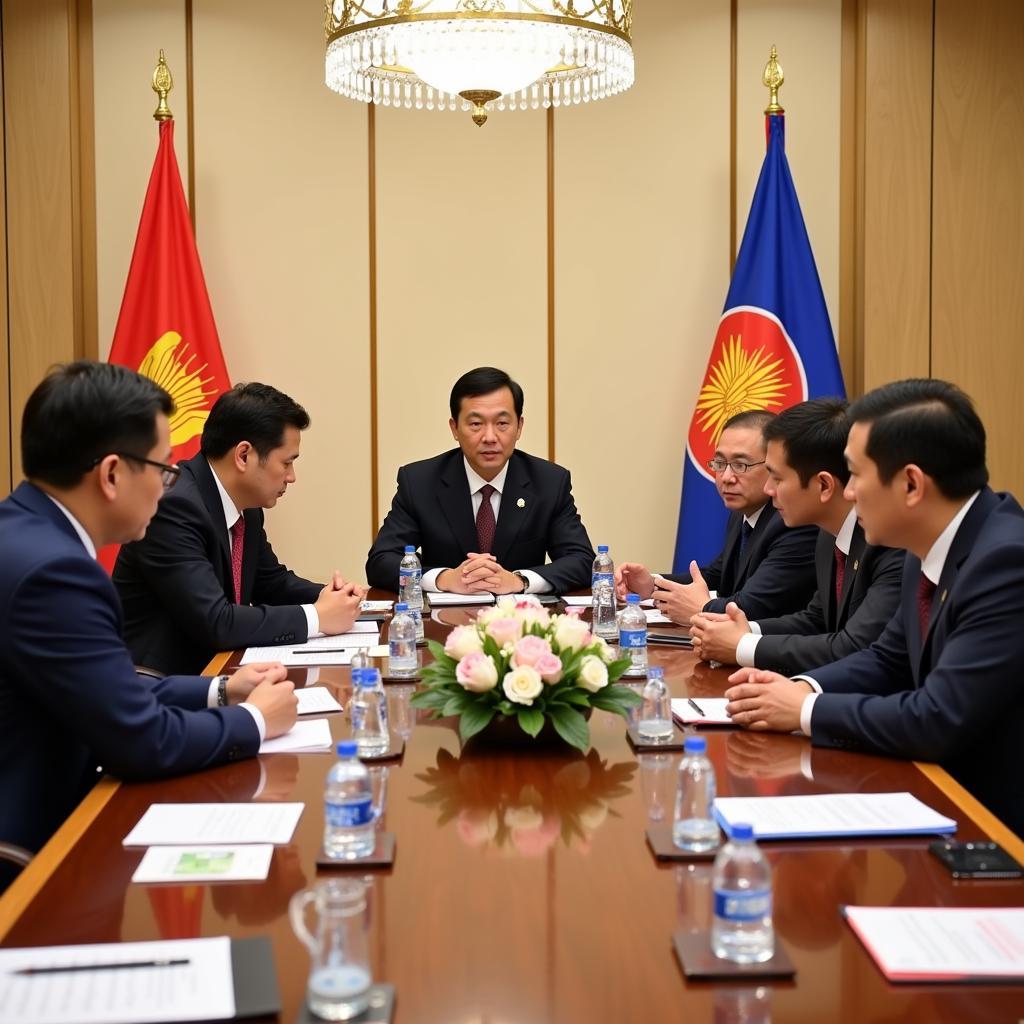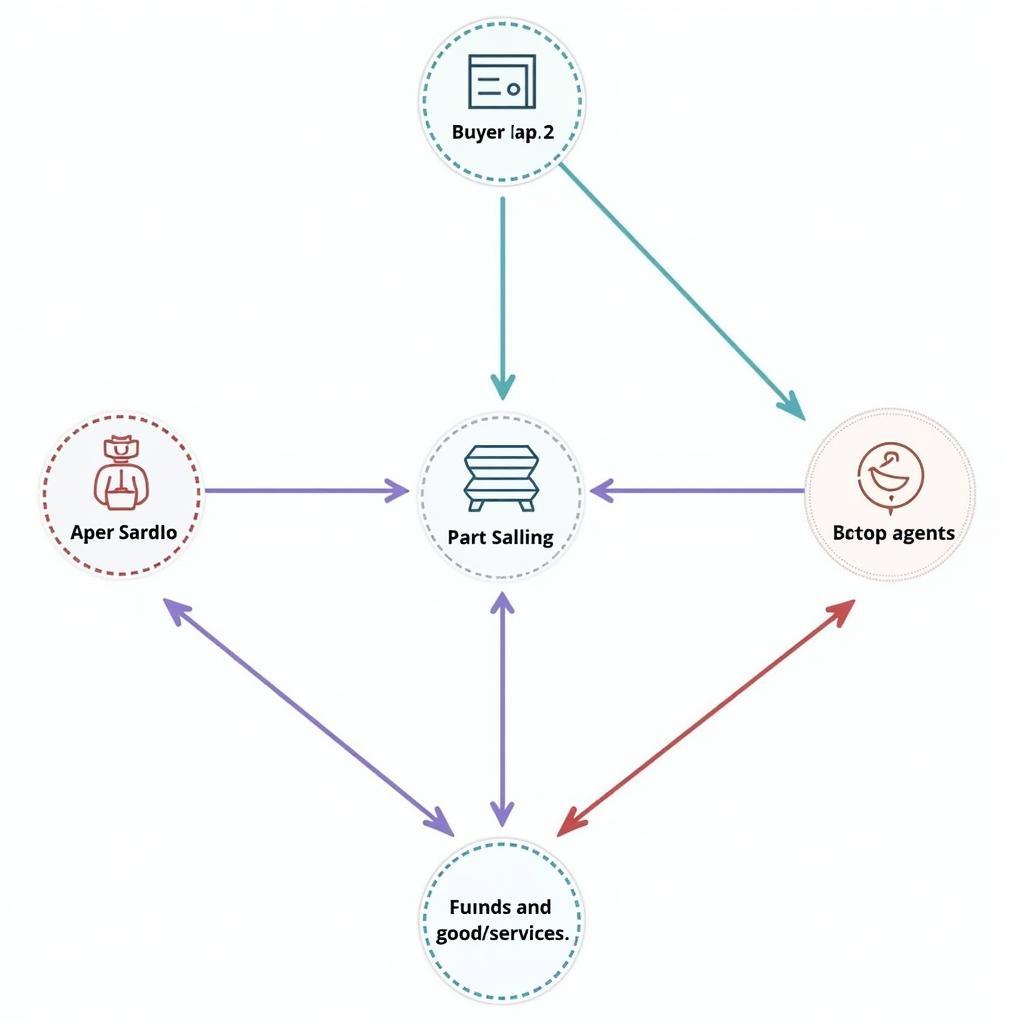The Association of Southeast Asian Nations (ASEAN) is a regional intergovernmental organization comprising ten Southeast Asian countries. Understanding the Aims And Principles Of Asean is crucial to grasping its significance in fostering regional cooperation and stability. These foundational elements guide ASEAN’s actions and shape its future direction, impacting everything from economic integration to political dialogue.
Foundational Principles: The Bedrock of ASEAN Cooperation
ASEAN’s principles, enshrined in the Treaty of Amity and Cooperation in Southeast Asia (TAC), provide the framework for peaceful coexistence and mutually beneficial relationships. These core tenets guide member states in their interactions, promoting a culture of respect, consultation, and non-interference. The TAC, a key document in understanding the aims and principles of ASEAN, promotes regional peace and stability. Specifically, it champions the peaceful settlement of disputes, renunciation of the threat or use of force, and effective cooperation among member states. This fosters a climate of trust and mutual respect, essential for achieving the organization’s broader aims.
These principles are not merely abstract ideals; they are operationalized through various mechanisms and agreements. For instance, the ASEAN Charter, adopted in 2007, further codifies these principles and establishes a legal framework for the organization. It outlines the procedures for dispute settlement, promotes good governance and the rule of law, and strengthens the organization’s institutional capacity.
Key Principles of ASEAN
- Mutual respect for the independence, sovereignty, equality, territorial integrity, and national identity of all nations: This principle acknowledges the diverse nature of ASEAN member states and their right to self-determination.
- The right of every State to lead its national existence free from external interference, subversion or coercion: This principle safeguards the autonomy of member states and protects them from undue influence.
- Non-interference in the internal affairs of one another: This principle underscores the importance of respecting national sovereignty and avoiding actions that could destabilize other member states.
- Settlement of differences or disputes by peaceful means: This principle emphasizes the commitment to dialogue and negotiation as the primary means of resolving conflicts.
- Renunciation of the threat or use of force: This principle reinforces the commitment to peaceful coexistence and rejects the use of aggression in resolving disputes.
- Effective cooperation among themselves: This principle highlights the importance of collaborative efforts in achieving shared goals.
 ASEAN Summit: Leaders in Discussion
ASEAN Summit: Leaders in Discussion
The Aims of ASEAN: A Vision for Regional Prosperity and Security
The aims and objectives of asean are multifaceted, encompassing economic, social, cultural, and political dimensions. They reflect the shared aspirations of member states to create a vibrant and integrated community. At the heart of these aims is the desire to accelerate economic growth, social progress, and cultural development in the region.
Economic Cooperation and Integration
ASEAN aims to create a single market and production base, facilitating the free flow of goods, services, investments, and skilled labor. This economic integration aims to enhance the region’s competitiveness and attract foreign investment, ultimately improving the living standards of its people. Initiatives like the ASEAN Economic Community (AEC) are crucial in realizing this goal.
Promoting Peace and Security
Maintaining regional peace and stability is a paramount aim of ASEAN. The organization strives to create a secure and stable environment conducive to economic development and social progress. Through dialogue, confidence-building measures, and preventive diplomacy, ASEAN works to address potential conflicts and maintain peaceful relations among member states. ASE Method might offer further insight into conflict resolution strategies within ASEAN.
Social and Cultural Development
ASEAN recognizes the importance of social and cultural development in building a cohesive and harmonious community. The organization promotes cooperation in areas such as education, health, human resource development, and environmental protection. These initiatives aim to improve the quality of life for all ASEAN citizens and foster a sense of shared identity. For those interested in other initiatives, information about ASE FSX might be useful.
ASEAN in the 21st Century: Addressing New Challenges
The aims and principles of ASEAN remain relevant in addressing the complex challenges facing the region today. From climate change and cybersecurity to emerging infectious diseases and geopolitical tensions, ASEAN plays a crucial role in fostering cooperation and finding collective solutions. Exploring past conflicts, such as those documented in 2010 asia conflicts asean, can offer valuable lessons for navigating current challenges. The ASEA genesis story, found at asea genesis story, provides context to the evolution of ASEAN and its role in fostering regional cooperation.
“ASEAN’s commitment to multilateralism and regional cooperation is more vital than ever in navigating the complexities of the 21st century,” says Dr. Anisa Anwar, a prominent Southeast Asian political analyst.
“The strength of ASEAN lies in its ability to bring together diverse nations to address shared challenges,” adds Professor Michael Budiman, a leading expert on ASEAN economics.
Conclusion
The aims and principles of ASEAN provide a roadmap for regional cooperation and integration. By adhering to these core tenets, ASEAN has achieved significant progress in promoting peace, stability, and prosperity in Southeast Asia. Understanding these fundamental elements is essential for anyone seeking to engage with the region and contribute to its continued development.
FAQ
- What are the main aims of ASEAN?
- What are the core principles of ASEAN?
- How does ASEAN promote regional cooperation?
- What is the role of the ASEAN Charter?
- How does ASEAN address regional conflicts?
- What are some of the challenges facing ASEAN today?
- How can I learn more about ASEAN?
More Questions You Might Have:
- How has ASEAN’s approach to conflict resolution evolved over time?
- What are the economic benefits of ASEAN membership for individual countries?
- How does ASEAN’s cultural diversity contribute to its strength?
Explore Further on ASEAN Media Directory:
- Explore more articles about ASEAN’s history and development.
- Find resources on ASEAN’s economic initiatives.
- Discover information about ASEAN’s cultural programs.
Need support? Contact us 24/7: Phone: 0369020373, Email: [email protected], or visit us at: Thon Ngoc Lien, Hiep Hoa, Bac Giang, Vietnam.


